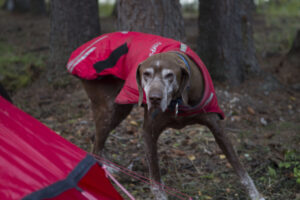Back to the River
USDA NIFA ANNH #2018-04720 “Back to the River: The Science behind Alaska`s Traditional Subsistence Lifestyle”
“To ask an individual to participate in an experience that is perceived as useful is to work in a spirit of respectful cooperation. To tell an individual to do something that has no demonstrable value is to demand submissive compliance.” –Alan Dick
This exciting project addresses STEM principles in the context of Alaska Native village life, which features geographic isolation and preservation of traditional subsistence lifestyles. We engage with rural communities/AK fish camps on a riverboat on the Yukon using two culturally-relevant research models that integrate: 1) mobile discovery workshops (MobLab) to assess bioactivity of local wild medicinal plant/microbial species, and 2) sled dogs as a sentinel for AK Native health.
Harsh climate in circumpolar regions create a unique environment that produces plants enriched in protective phytochemicals as an adapted defense mechanism against the elements. The UAF/NCSU collaborative team has successfully engaged with rural AK communities for upwards of a decade using mobile discovery as an integrated and culturally targeted approach to bioexploration and possible subsequent pharmaceutical lead compound discovery. This hands-on participatory research toolbox is designed to bridge the youth-to-elder interface. On the riverboat, the MobLab tests bioactive potential of local, traditionally-used botanicals.
As an in vivo circumpolar health model for monitoring the effect of a changing diet on health outcomes, sled dogs as a sentinel for human health arguably provide a more reliable model than humans. Sled dogs are historically an integral part of the subsistence lifestyle, used for trapping, packing, and transportation. Found throughout the Arctic and subarctic, sled dogs are genetically similar animals that are raised, exercised, and housed in similar conditions. In rural AK, a 40-pound bag of dog food costs around $80 and will last less than a week for even a small kennel. For both economic and cultural reasons, village sled dogs eat largely a subsistence diet of local game, fish and marine mammals making them a valuable sentinel. Perhaps, most importantly, the use of sled dogs reduces the impact of confounding variables such as tobacco and alcohol use. Students participate in science that delves into the science behind AK’s traditional subsistence lifestyle.




Sled dogs, which are bred for short endurance speed racing (sled racing or ski-Jor), are an ideal model to examine the relationship between diet, strenuous exercise, and the release of bioactive plant-derived compounds into circulation. Current projects center on collection of phytoactive-rich Vaccinium uliginosum (Alaskan bog blueberries) and acute or chronic feeding of physiologically-relevant interventions mixed with the typical kibble of the dog’s diet. The dogs actually love the blueberries and will preferentially consume them in preference to other food in their dish. From human proteomic studies, we know that endurance exercise in cold temperatures triggers immune dysfunction. Also from human trials, it is evident that blueberry consumption upregulates immune function genes. This project will examine how exercise impacts immune function in the dogs and if blueberry consumption can circumvent dysregulation, keeping the immune system strong at a stressful time.



For more information, visit the GIBEX website.